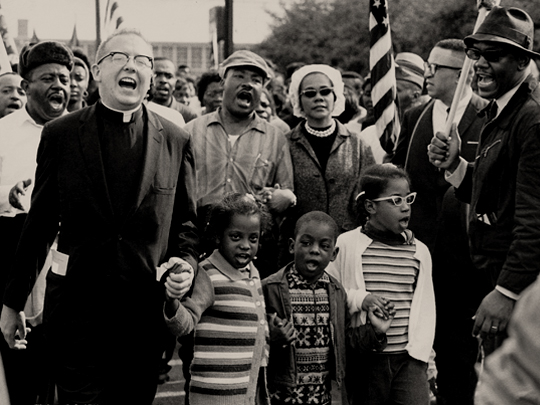Abernathy Family Photos / Wikimedia Commons / CC-BY-SA-3.0 / GFDL
1 – The March from Selma to Montgomery
In early 1965, Martin Luther King Jr.’s & his Southern Christian Leadership Conference made Selma, Alabama, the focus of their efforts to register black voters in the South.
In March of that year, protesters attempting to march from Selma to the state capital of Montgomery were met with violent resistance by state and local authorities.
The first march took place on March 7, organized locally by Bevel, Amelia Boynton, and others.
State troopers and others attacked the unarmed marchers with billy clubs and tear gas after they passed over the county line. The event became known as Bloody Sunday.
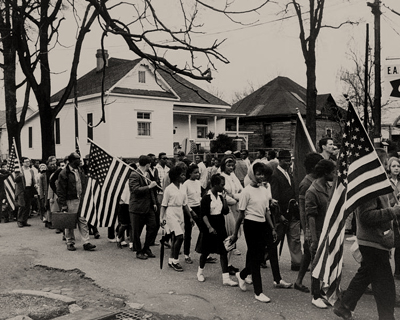
The second march took place on March 9. Troopers, police, and marchers confronted each other at the end of the Edmund Pettus Bridge, which crosses the Alabama River.
But, when the troopers stepped aside to let them pass, King led the marchers back to the church, obeying a federal injunction.
That night, civil rights activist James Reeb, a minister from Boston, was beaten and murdered by a white group.
The third march started on March 21.
Protected by 2,000 soldiers of the U.S. Army, 1,900 members of the Alabama National Guard, FBI agents and Federal Marshals, the marchers averaged 16 km a day along U.S. Route 80, known in Alabama as the “Jefferson Davis Highway”.
The marchers arrived at the Alabama State Capitol in Montgomery on March 25.
Thousands joined the campaign, with 25,000 people entering the capital city that day in support of voting rights.
The historic march raised awareness of the difficulty faced by black voters in the South.
A Voting Rights Act was passed later that year. The route is memorialized as the “Selma To Montgomery Voting Rights Trail,” and is designated as a U.S. National Historic Trail.
2 – Cosmonaut Alexey Leonov Becomes First Person to Walk in Space
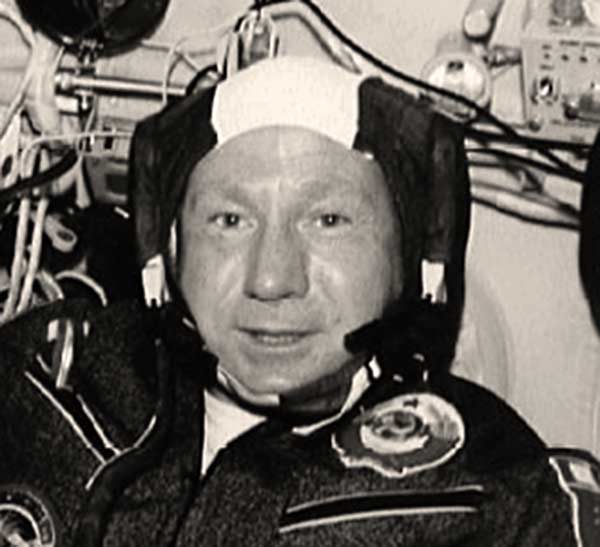
Alexey Leonov was one of the 20 Soviet Air Force pilots selected to be part of the first cosmonaut group in 1960.
On 18 March 1965, he became the first human to conduct an extravehicular activity (EVA), exiting the capsule during the Voskhod 2 mission for a 12-minute spacewalk.
His walk in space was originally planned to have taken place on the Vostok 1 mission, but this was canceled.
He was outside the spacecraft for 12 minutes and 9 seconds, connected to the craft by a 5.35-meter tether.
At the end of the spacewalk, Leonov’s spacesuit had inflated in the vacuum of space to the point where he could not re-enter the airlock.
He opened a valve to allow some of the suit’s pressure to bleed off and was barely able to get back inside the capsule.
3 – Rights Activist Malcolm X is Shot Dead
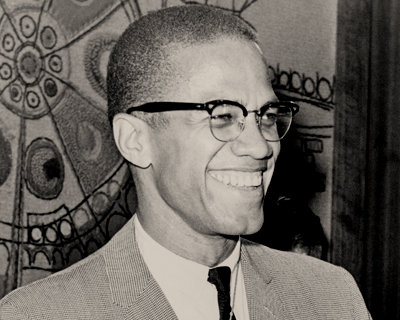
Malcolm X was an African-American Muslim minister and human rights, activist.
His admirers saw him as a courageous advocate for the rights of blacks, who indicted white America for its crimes against black Americans.
His detractors accused him of preaching racism and violence. He has been called one of the greatest and most influential African Americans in history.
On February 19, 1965, Malcolm X told interviewer Gordon Parks that the Nation of Islam was actively trying to kill him.
On February 21, 1965, he was preparing to address the Organization of Afro-American Unity in Manhattan’s Audubon Ballroom when someone in the 400-person audience started shouting.
As Malcolm X and his bodyguards tried to quell the disturbance, a man rushed forward and shot him once in the chest with a sawed-off shotgun and two other men charged the stage firing semi-automatic handguns.
He was pronounced dead shortly after arriving at Columbia Presbyterian Hospital. The autopsy identified 21 gunshot wounds to the chest, left shoulder, arms, and legs.
4 – Race Riots in Watts, Los Angeles
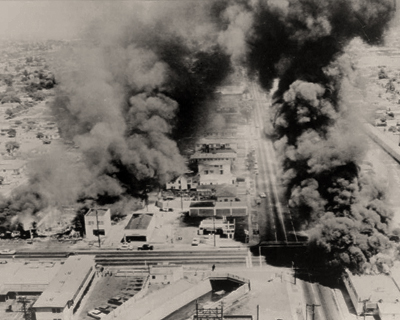
The Watts riot sometimes referred to as the Watts Rebellion, took place in the Watts neighborhood of Los Angeles for five days, from August 11 to 16th, 1965.
On August 11, an African-American motorist was arrested for drunk driving. A minor roadside argument broke out, which escalated into a fight.
The community reacted in outrage to allegations of police brutality that soon spread, and six days of looting and arson followed.
Los Angeles police needed the support of nearly 4,000 members of the California Army National Guard to quell the riots.
In total, the riots resulted in 34 deaths, over 1,000 injuries, and over $40 million in property damage.
The riots were blamed principally on police racism. It was the city’s worst unrest until the Rodney King riots of 1992.
5 – Iranian Premier Hassan Ali Mansur Assassinated by 17-year-old
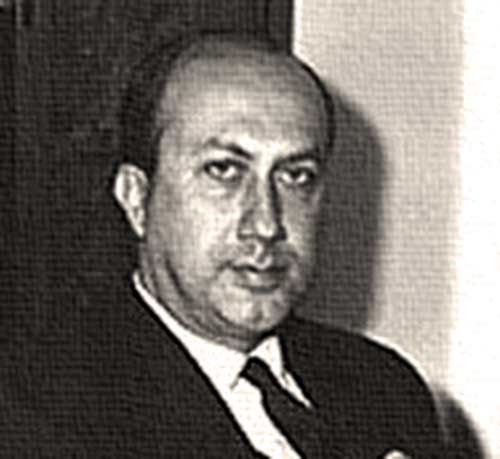
On 21 January 1965, Iranian Premier Hassan Ali Mansour was entering the gates of the Iranian Parliament to present his first State-of-the-Union speech.
After he stepped out of his car in Baharestan Square, he was shot three times by 17-year-old Mohammad Bokharaei.
Bokharaei was later executed, along with three others implicated in the assassination – Reza Saffar Harandi, Haaj Sadegh Amani, and Morteza Niknejad.
Mansour was put back into the car and rushed to the hospital, where he remained in critical condition for 5 days before he finally died.
During the crisis, the Shah quickly appointed Mansur’s friend, Amir-Abbas Hoveida as the acting prime minister, which he inherited for the next 13 years.
Mansour was buried in ‘Shah-Abdol-Azim’ near Reza Shah’s mausoleum.
After the Islamic Revolution, the Mansour gravesite was destroyed by Ayatollah Khalkhali, and his remains were dug up and scattered.
6 – Congo Military Coup Under Gen Mobutu
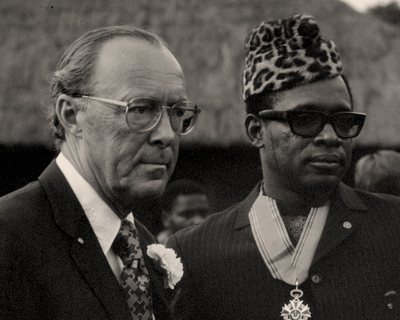
Prime Minister Moise Tshombe’s Congolese National Convention had won a large majority in the March 1965 elections, but President Kasa-Vubu appointed an anti-Tshombe leader, Évariste Kimba, as prime minister-designate.
Parliament twice refused to confirm him. With the government in near-paralysis, General Mobutu seized power in a bloodless coup on 25 November.
Under the auspices of a state of emergency, Mobutu assumed sweeping, almost absolute, powers for five years.
In his first speech, Mobutu told a large crowd at Léopoldville’s main stadium that since politicians had brought the country to ruin in five years, there would be no political party activity in the country for five years.
Parliament was reduced to a rubber-stamp before being abolished altogether, though it was later revived. The number of provinces was reduced, and their autonomy curtailed, resulting in a highly centralized state.
Joseph-Desiré Mobutu became notorious for corruption, nepotism, and the embezzlement of billions of dollars during his reign, as well as other extravagances, such as Concorde-flown shopping trips to Paris.
Mobutu went on to preside over the country for more than three decades, a period of widespread human rights violations.
